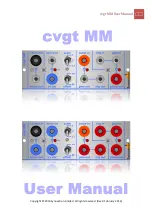
Section 7 — Sampling/Signal Source Concepts
What is Sampling?
143
Sample Rate
The sample rate determines how often the signal is measured (that is, how close together the dots
would be in the illustration above). A sample rate of 30 kHz, for example, means that the ASR-10
is sampling the signal 30,000 times each second. A higher sample rate will yield a more accurate
picture of the waveform and better high frequency response. But keep in mind that a higher
sample rate also will use up the ASR-10 memory more quickly, since you are generating more
numbers per second that have to be stored in memory.
The ASR-10 can sample at either 30 kHz (actually 29,761.9 samples per second) or 44 kHz
(44,100.0 samples per second). To give you some frame of reference, Compact Discs are also
recorded at 44.1 kHz, and Digital Audio Tape (DAT) is recorded at 48 kHz. You can adjust the
ASR-10 sample rate by changing the current effect algorithm on the FX Select•FX Bypass page.
Note:
When the current system sample rate is 44.1 kHz, the Digital Output will provide direct digital
audio output of the Main Output mix, when the optional DI-10 Digital I/O Board is installed.
Aliasing
A digital sampler can only accurately record frequencies up to one half that of the sample rate.
This frequency (half the sample rate) is known as the Nyquist frequency, named after the fellow
who figured that out. Trying to sample sounds that contain frequencies above half the sample
rate will result in aliasing, the creation of false (or “alias”) low-frequency tones, when playing the
sound back.
Suppose we were to sample the wave from our previous example at a much lower sample rate
(fewer times per second), like this:
Signal level measured
When the ASR-10 tries to reproduce this sound (to connect the dots, as it were) the resulting
wave bears little resemblance to the original, because there are not enough sample points to
accurately recreate it:
Low-frequency alias
Original signal
To prevent aliasing, the ASR-10 has a 64 times oversampling, one-bit Sigma-Delta, stereo A/D
input converter, which offers superior audio fidelity.
















































